




When it comes to washing machines, one of the most important components is the agitator. This mechanical device plays a crucial role in the cleaning process, ensuring that your clothes are thoroughly washed, rinsed, and wrung out.
So, what exactly is an agitator?
An agitator is a large spindle located in the center of the washing machine’s drum. It is designed to create a dynamic motion that helps to loosen dirt and stains from your clothes. Think of it as a powerful paddle that stirs up the water and detergent mixture, ensuring that every garment is thoroughly cleaned.
How does the agitator work?
The agitator has a series of blades or fins that extend from the bottom to the top of the drum. As the drum rotates, these blades move back and forth, creating a forceful swirling motion. This motion agitates the water and detergent solution, allowing it to penetrate deep into the fabric fibers and break down any dirt particles.
It’s important to note that not all washing machines have agitators. Some high-efficiency models use alternative washing methods, such as a pulsator or impeller. While these may differ in design, their goal is the same – to clean your clothes effectively.
In conclusion, understanding the role of an agitator in a washing machine is crucial to achieving clean, fresh-smelling laundry. It’s the key component that creates the necessary agitation to remove stubborn dirt and stains. So next time you load up your washing machine, take a moment to appreciate the work that the agitator is doing to keep your clothes clean and fresh.
Overview of a Washing Machine
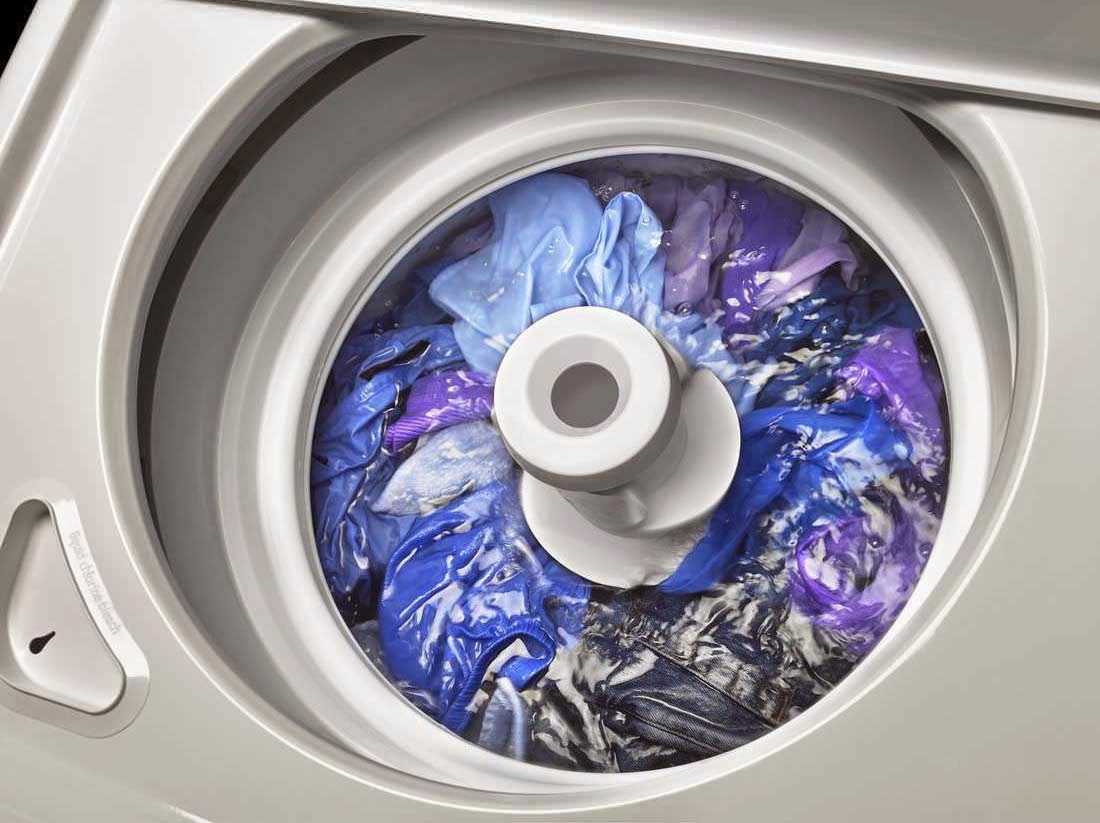
A washing machine is a household appliance used for cleaning clothes and other textiles. It operates by agitating the clothes in a water-filled drum, along with detergent, to remove dirt and stains. The washing machine typically consists of several key components:
- Drum: The drum is a cylindrical compartment inside the washing machine where the clothes are loaded.
- Agitator: The agitator is a central spindle or post that helps to move the clothes around in the drum, ensuring thorough cleaning.
- Water inlet: The water inlet is where water is supplied to the washing machine, usually through a hose connected to a tap.
- Detergent dispenser: The detergent dispenser is a compartment or tray where detergent, fabric softener, or other cleaning agents are added.
- Control panel: The control panel is a set of buttons or dials that allow the user to select the desired wash cycle, temperature, and other settings.
- Motor: The motor is responsible for powering the various components of the washing machine, such as the drum and agitator.
- Drain pump: The drain pump helps to remove dirty water from the washing machine after the wash cycle is complete.
Modern washing machines may also have additional features, such as digital displays, different wash programs for different types of fabrics, and energy-saving modes.
Overall, a washing machine is an essential appliance in most households, providing a convenient and efficient way to clean clothes and other textiles. The agitator plays a crucial role in the cleaning process by agitating the clothes, ensuring thorough cleaning and removing dirt and stains.
Importance of an Agitator
The agitator is a fundamental component of a washing machine, playing a crucial role in the cleaning process. Its main function is to facilitate the movement of the clothing and washing solution, ensuring a thorough and effective wash.
1. Effective Cleaning
The agitator creates a rotational motion in the washing machine, which helps to dislodge dirt, stains, and debris from the fabric surface. By agitating the clothes in a water and detergent solution, the agitator aids the process of removing grime and dirt particles, resulting in cleaner and fresher laundry.
2. Improved Stain Removal
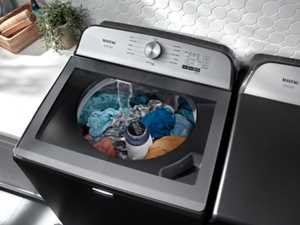
The rotational action of the agitator helps to agitate the fabric fibers and increase the effectiveness of stain removal. By loosening and lifting stains from the fabric, the agitator enables the detergent to penetrate deeper into the fibers, ensuring more efficient stain removal. This is especially important for heavily soiled or stained clothing.
3. Enhanced Water and Detergent Distribution
The agitator helps to distribute water and detergent evenly throughout the load, ensuring that all the clothes are thoroughly cleaned. It prevents the clothes from clumping together and promotes better contact between the cleaning solution and the fabric surface, resulting in a more effective wash.
4. Efficient Deodorization
The agitator’s movement helps to remove odors from the clothes by circulating the detergent and water through the fabric fibers. This agitation process dislodges dirt and bacteria that may be causing unpleasant smells, leaving the clothes smelling fresh and clean.
5. Time-saving

The agitator’s powerful movement reduces the overall washing time by speeding up the cleaning process. With its ability to agitate the clothes vigorously, the agitator ensures efficient and quick cleaning without compromising on the quality of the wash.
In conclusion, the agitator is an essential component of a washing machine as it facilitates effective cleaning, improved stain removal, enhanced water and detergent distribution, efficient deodorization, and time-saving benefits. Its presence ensures a thorough and efficient wash, leaving your laundry clean and fresh.
Functionality of an Agitator
An agitator is a vital component in a washing machine that helps in effectively cleaning clothes by creating a swirling motion within the washer. It plays a crucial role in removing dirt, stains, and other debris from garments during the wash cycle.
Mixing detergent and water
One of the primary functions of an agitator is to mix the detergent and water thoroughly. The agitator rotates in a way that allows it to pull the clothes down and push them back up, creating a continuous motion that helps distribute the detergent evenly and penetrate the fabric fibers.
Removing dirt and stains
The back-and-forth motion generated by the agitator helps dislodge dirt particles and stains from the clothes. As the agitator moves the garments in different directions, it creates friction between them. This friction, combined with the detergent, helps break down and remove stubborn dirt, grime, and stains.
Increasing water circulation
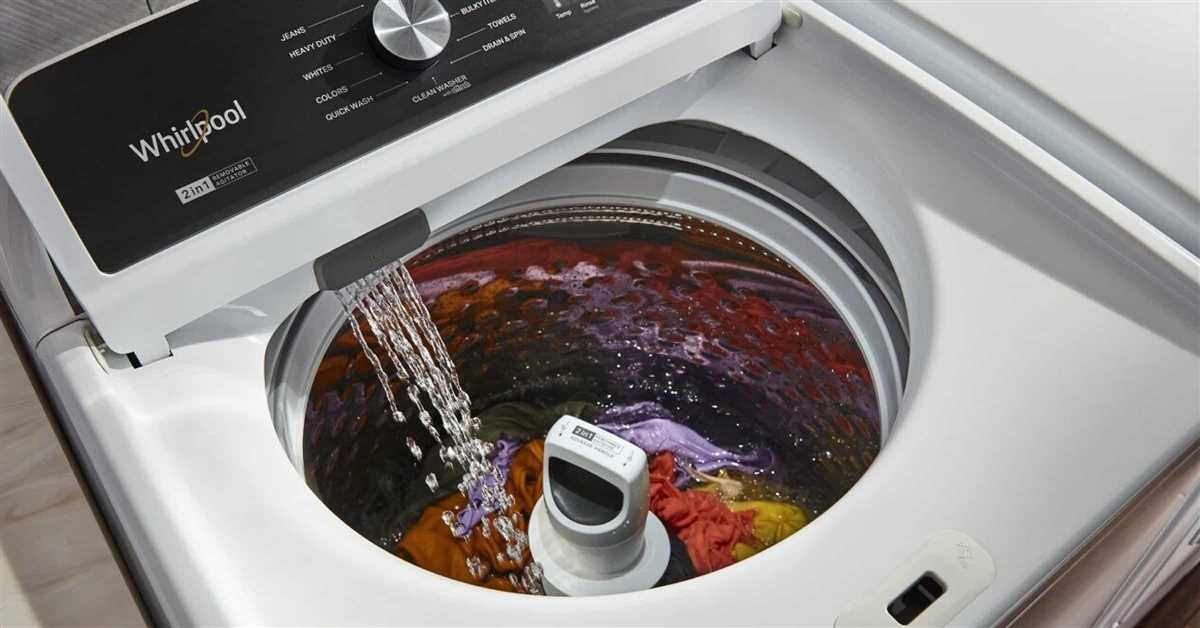
The swirling action created by the agitator promotes water circulation throughout the wash tub. This optimizes the cleaning process by ensuring that all parts of the garments come into contact with the detergent solution. Additionally, the agitator helps remove lint and other debris from the clothes, which is then flushed out with the water.
Enhancing rinsing efficiency
During the rinse cycle, the agitator aids in thoroughly rinsing the clothes by agitating them in clean water. This movement helps remove any remaining detergent from the fabric and ensures that the garments are properly rinsed and free from residue.
Improving overall cleaning performance
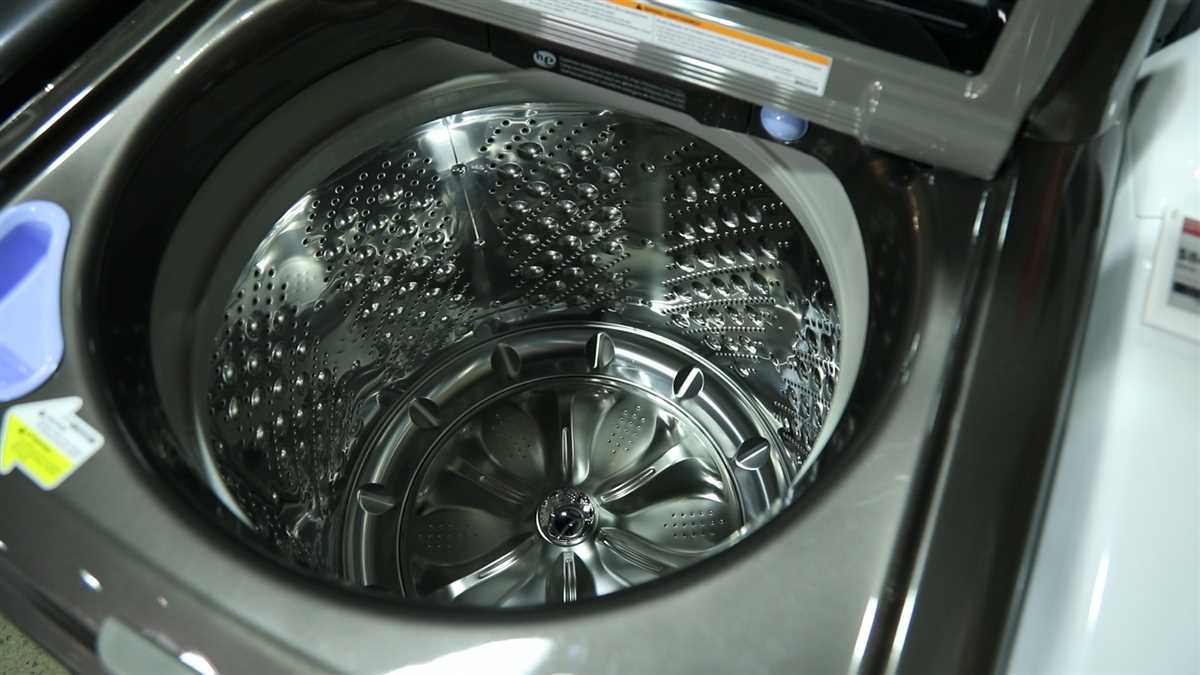
Overall, an agitator significantly contributes to the cleaning performance of a washing machine. By creating a dynamic motion within the washer, it helps loosen dirt, stains, and debris from the clothes, enhancing the effectiveness of the detergent. The agitator’s functionality is especially beneficial for heavily soiled or stained garments.
While agitators are a common feature in traditional top-loading washing machines, some newer models now use alternative technologies such as impellers or pulsators. These technologies function differently but aim to achieve the same goal of efficiently cleaning clothes.
Maintenance and Care Tips
1. Regular Cleaning
It is important to clean your washing machine regularly to keep it running efficiently. Here are some cleaning tips:
- Wipe down the exterior surface of the washing machine with a damp cloth.
- Remove any lint or debris from the agitator and the wash drum.
- Run a cycle with hot water and vinegar to remove any build-up or odors.
- Use a washing machine cleaner once a month to clean and freshen the interior.
2. Check for Damages
Inspect your washing machine regularly for any damages or signs of wear and tear. Here’s what you should look out for:
- Check for any leaks or water drips from the machine.
- Make sure the agitator is functioning properly without any unusual noises.
- Inspect the hoses for any cracks or bulges.
- Ensure that the drum spins smoothly without any resistance.
3. Proper Loading
Proper loading of your laundry can help prevent excessive wear and tear on the agitator. Follow these tips for optimal loading:
- Do not overload the washing machine. Follow the manufacturer’s guidelines for load capacity.
- Distribute the laundry evenly in the drum to maintain balance during the wash cycle.
- Avoid washing heavy or bulky items together with delicate fabrics.
4. Avoid Excessive Detergent
Using too much detergent can cause a build-up on the agitator and affect its performance. Follow these guidelines when using detergent:
- Read the instructions on the detergent packaging and use the recommended amount.
- Avoid using excessive amounts of detergent, as it can cause excess sudsing and clog the agitator.
- If you notice residue or excessive sudsing, run an extra rinse cycle to ensure all detergent is properly removed.
5. Regular Maintenance Checks
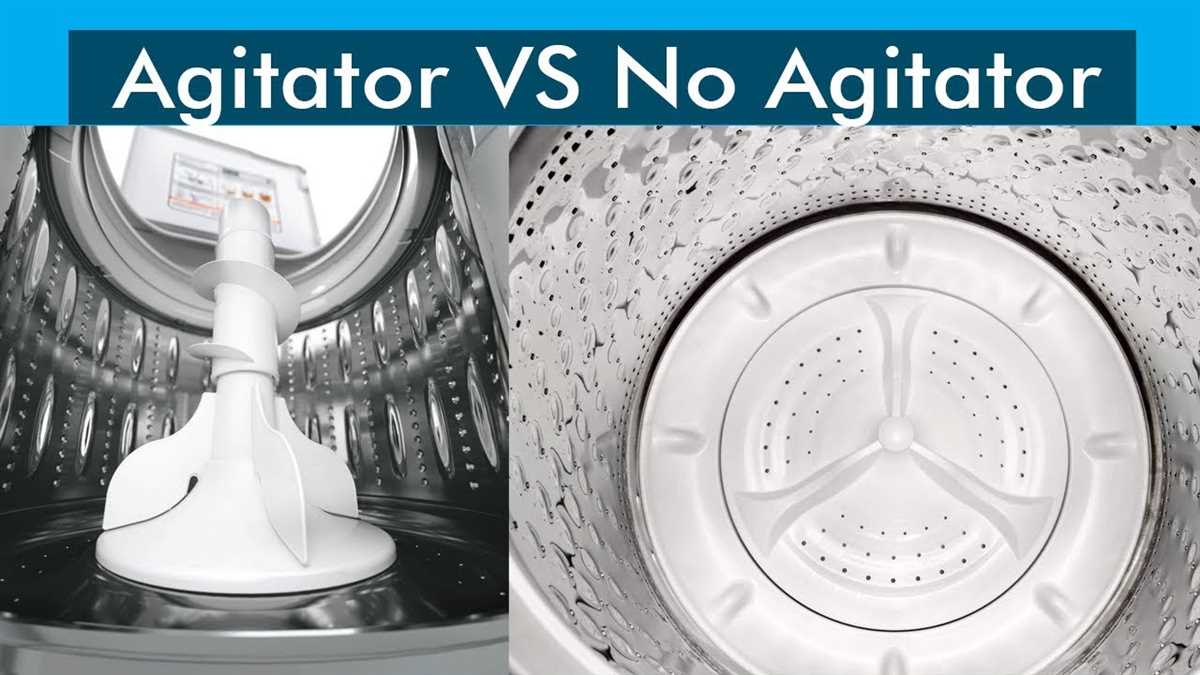
Perform regular maintenance checks to keep your washing machine in good working condition:
- Inspect and clean the agitator and drum every few months for any build-up or obstructions.
- Check and clean the lint filter regularly to prevent blockages.
- Ensure that the washing machine is level to avoid excessive vibrations during the spin cycle.
- Keep the area around the washing machine clean and free from dust or dirt.
By following these maintenance and care tips, you can ensure the longevity and optimal performance of your washing machine’s agitator.
FAQ
What is the role of an agitator in a washing machine?
An agitator in a washing machine is a device that helps to stir or move the clothes around during the wash cycle. It creates a turbulent water flow to ensure thorough cleaning and remove dirt and stains from the clothes.
How does an agitator work in a washing machine?
An agitator typically consists of a vertical spindle with fins or blades attached to it. When the washing machine is in operation, the agitator rotates back and forth or moves in a pulsating motion. This movement creates a whirlpool effect, which helps to agitate the water and clothes, facilitating the removal of dirt and stains.
What are the benefits of having an agitator in a washing machine?
An agitator helps to enhance the cleaning performance of a washing machine. By agitating the water and clothes, it ensures that the detergent is distributed evenly and effectively throughout the load, resulting in better stain removal. It can also be useful for washing heavily soiled or bulky items.
Can I remove the agitator from my washing machine?
Whether you can remove the agitator from your washing machine depends on the model and type of machine you have. In some top-loading machines, the agitator can be easily removed by unscrewing it or detaching it from the drive shaft. However, in other models, the agitator is built-in and cannot be removed. It is best to refer to the manufacturer’s instructions or consult a professional if you are unsure.
Are there any alternatives to using an agitator in a washing machine?
Yes, there are alternative washing machine designs that do not use an agitator. One such design is a front-loading washing machine, which uses a tumbling action to clean the clothes. These machines typically have a drum that rotates horizontally, lifting and dropping the clothes in and out of the water. While front-loading machines are known for their energy efficiency and gentler treatment of clothes, they may not be suitable for washing certain types of items, such as heavily soiled or bulky items.










